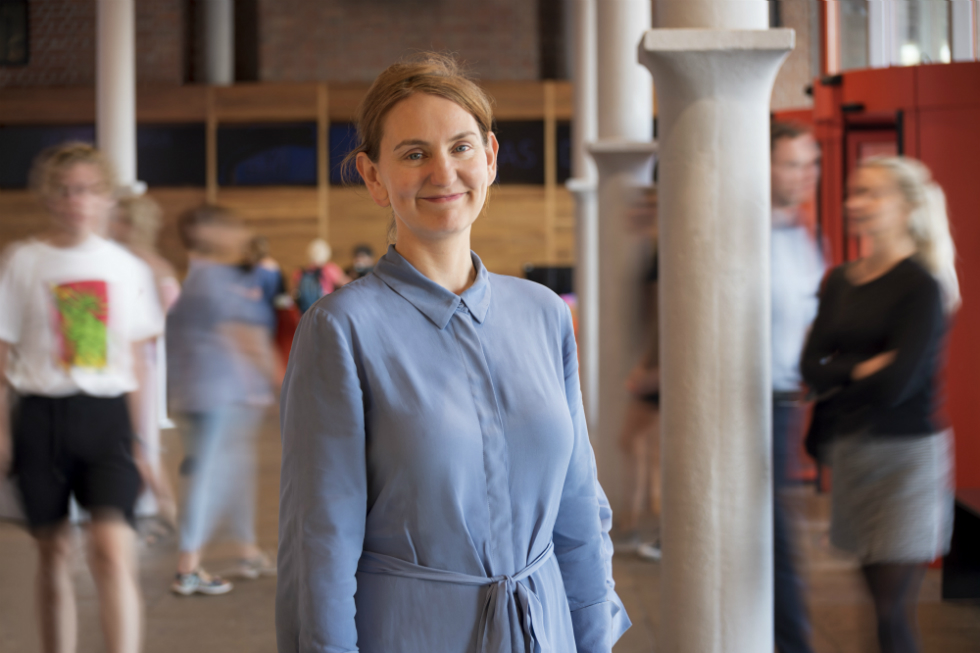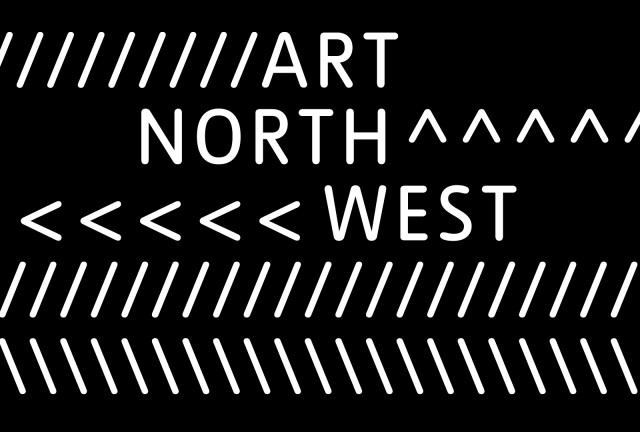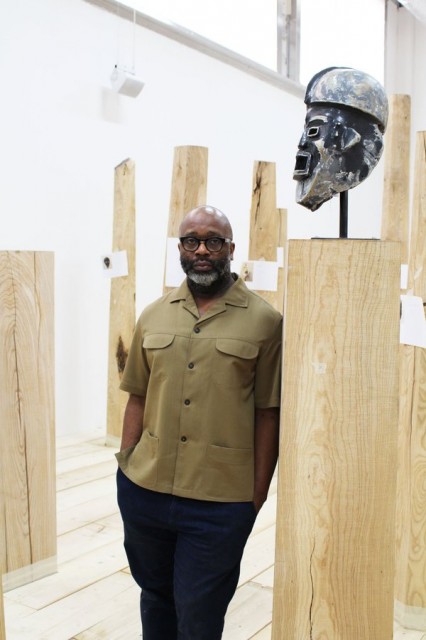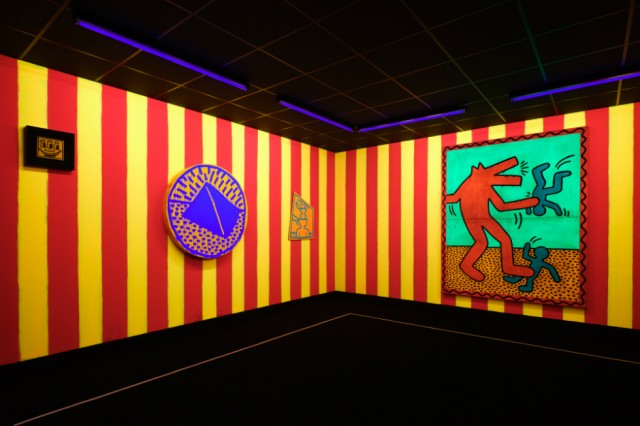“We’ve got to hold artists close.” The Big Interview: Helen Legg

The Director of Tate Liverpool, Helen Legg, speaks to Mike Pinnington about the venue’s search for North West artists, and her first twelve months in post…
Helen Legg arrived at Tate Liverpool in interesting times. A decade on from the city’s period as European Capital of Culture, the incoming Director (previously of Bristol’s Spike Island) found an organisation in transition; effectively filling roles vacated by an artistic director and executive director, she has a lot on her plate. But, there was the boon of having a genuine summer blockbuster on her hands, in the form of current exhibition, Keith Haring.
How does Legg feel about those first twelve, dare we say tumultuous, months at the helm? “I think it’s been really great; it’s been a really steep learning curve, obviously, and a lot of getting to grips with a very different kind of organisation to the one that I was in before,” she tells me.
“Spike Island [is a] much smaller, more niche organisation; so I think the big differences are things around the community, I suppose, or the people who circulate around the gallery. With Spike Island, it’s a very tight knit community of artists and of course other visitors as well.”
Having worked at Tate Liverpool for a number of years myself, I nod, kind of knowing what a different beast it is in that respect.
“Tate,” Legg concurs, “tries to serve everyone, and that’s a really big leap to think about a very particular community to an extremely broad one, with many different points of view. But I think it’s manageable because the team right across Tate is so professional and committed, and really know what they’re doing and put a huge amount of thought and preparation into everything, so that’s been impressive.”
Trying to “serve everyone” is something that stands out from my time there, and Legg has witnessed first hand early on in her tenure the incredible success of an exhibition that seems, more than many shows, to do just that. What has that been like? “I think I’ve just been really lucky to have been here during Keith Haring, which has been such a success story critically and popularly.” But, alongside that, she says she’s pleased, too, to “have had those few gaps in the programme where I’ve been able to bring things in quite quickly, like Arthur Jafa [Love Is The Message, The Message Is Death, below], to start to suggest a change. So… Yeah, it’s been busy. [Haring] made everyone feel really positive.”
![Arthur Jafa Love is the Message The Message is Death 2016 [02]](http://www.thedoublenegative.co.uk/blog/wp-content/uploads/2019/04/Arthur-Jafa-Love-is-the-Message-The-Message-is-Death-2016-02-640x426.jpg)
Has anything (such as those gaps in programme here and there) surprised her, I ask. “I try to come at things without expectation and just to be open to what comes… In a way, what comes is what Tate is, and you have to deal with it and run with it and, like I say, the team are so good, and a lot of people have been here for a long time, which gives you a really good support structure.”
Alongside making temporary exhibitions like Haring, Tate’s bread and butter is the national collection of art, of which it is custodian. Each Tate site has access to request works for their semi-permanent displays, and it was this, says Legg, that has taken some getting used to.
“I knew this was coming, but getting to grips with working with a collection – much more than working with living artists – is the real step change; it’s a different kind of pleasure, and it’s a different kind of responsibility, because you feel a responsibility when you’re working with a living artist, but it’s absolutely not that you’re devoid of responsibility when you’re working with the work of an artist who might have passed away many years ago – far from it. In fact it’s almost more, because the artist isn’t there to tell you what they think.”
Aside from the realities of changing jobs and the specific challenges that come with that Legg has, of course, also moved city, to one with a very specific and densely populated cultural landscape. How has she found Liverpool so far? “Moving from Bristol, I was really struck by the low cost of living in the city, which is brilliant for artists, and there’s also a good art school here. Y’know, I think the LJMU course is good, so that is all you really need for a strong independent art scene. Or, at least it’s the beginnings of a strong independent art scene, and Liverpool does have that.”
It’s no secret, either, that the city is teeming with institutions small and large, artist led groups, studios and more. “I was really struck by how many organisations there are,” Legg confirms, “how many artists there are making work, but also by how fragile it is and how fragmented it is.”
Recognising this, she quickly implemented regular artist breakfasts, held in Tate Liverpool’s cafe, affording those creatives who wanted it a chance to meet and chat with Tate Liverpool staff. “I wanted to try to support that community… And that was really a way to try to bring together that fragmentary but large group of people, and to give them an opportunity to meet each other in a different context and to speak to each other, and also [for us] to hear from them.”

An extension of this instinct, “the next stop on that particular journey”, she says, is the open call exhibition opportunity, Art North West (deadline midday, Tuesday 10 September 2019). “This has come out of all the work that I’ve done with artists in every job that I’ve done before,” she tells me. “The conversations that we had with artists, multiple things came up, [one of which] was that there are a lot of opportunities for emerging artists, and once you’ve gone through that period of having been considered an emerging artist, and you’re no longer an emerging artist – apart from for those very few who have experienced the top level of success – there are very few opportunities at that stage.”
There was also a recognition that geography, sometimes, plays its part in denying people those opportunities. “What could we do for artists who have this really serious body of work, but perhaps because they live in the North West, they’ve been less visible, they haven’t been as able to build their networks as artists? Can we boost things a little bit?”
As we chat, many names spring to mind who I can imagine applying. And, if they should, would be in with a shot of making the short list. Is there a template candidate in mind, I wonder. “We’re looking for people who have developed a really strong body of work”, says Legg, “who have some exhibition experience, who are really ambitious and who would be able to use the opportunity as a springboard. It should give them a chance to be seen by a wider range of people.
“We know we might get a really strong shortlist, and it means they get seen by [a panel of people] who are looking at artists’ work. We’re thinking of it more consciously as an opportunity for an artist to be nurtured through a process.
“Rather than throwing them into a situation where we say ‘right, we’re gonna discuss the installation now’, we might explain the way Tate works a little bit more carefully, and really work with the artist to think through what they’re doing in the space in a more developmental way. Again, it depends on the artist we select, because some artists may not need that, or might need it in some areas but not others.”
An exhibition at an institution the size of Tate means the support of a well-oiled machine. What expectations can the successful candidate have? “We might choose someone whose experience [means] they can really benefit from spending time with Development, with Communications and Marketing, with the Art Handling team, the Curatorial team, with Interpretation,” she replies. “Artists are a really important community for us, and I feel we’ve got to hold them close and support them where we can.”

I want to know about what else is on the horizon, what we, the audience, can look forward to. Art has long been criticised for its adherence to the dead white male artist (you know the ones), but Legg’s early forays into programming have yielded the aforementioned Arthur Jafa, whose Love Is The Message, The Message Is Death – on display at the gallery earlier this year – tends to hit like a brick (read our review), such is the freshness and honesty in the work. Can we expect, I ask, to see more diversity? “Definitely we’re looking to redress it – the whole of Tate is,” comes the answer. “I think it’s a question of making sure that going forwards we’re really conscious that we aren’t telling a one-sided story, that we’re trying to explore non-Western art histories.
“So, in the Op Art space, there’s this great work by Moroccan modernist Mohammed Melehi, and I think including artists like that as a way of drawing out other stories, or other art histories, is really critical.”
It’s crucial that artists of colour are conspicuous in galleries, not by their absence but their increased inclusion. Later this year, Tate Liverpool has another show whose programming can be read as a statement of intent, with Theaster Gates’ (pictured, above) Amalgam. It feels significant, because in my time at the gallery, the only artist of colour I can think of given any dedicated exposure in a paying show was Glenn Ligon, and even then it was in conversation with Jackson Polllock.
“I think what’s interesting about [Gates],” says Legg, “[is that] the whole show is telling a story about a mixed race community, which feels appropriate to Liverpool; so he’s gonna create a timeline that will incorporate some of Liverpool’s own history, and it’s significant because it’s his first show in Britain.”
Away from Tate Liverpool, what exhibitions has she seen recently that have left their mark, I ask. “One of them would be Arthur Jafa’s The White Album, so it allowed me the possibility to see the new work [at Venice Biennale] while we were showing the starting point. He made that first piece and he talked about how a lot of people said to him that it made them cry, or it gave them an emotional reaction, and he felt slightly uncomfortable with that, or he questioned what that meant and whether that was – in a Brechtian world – a cathartic response, and somehow that by feeling bad it made you feel like a better person, and in [The White Album] he talked about exploring whiteness and what that kind of response might mean.
“And then also at Venice – y’know I’m talking about the two award winners here, so it wasn’t difficult to like these works, but – there was this fantastic operatic performance which lasted at least an hour, I think, if not longer. It was the Lithuanian Pavilion, called Sun and Sea; much lighter in feel to something like the Jafa – a really pleasurable experience to watch… It somehow spoke about the world in its present moment, and about capitalism and ecology and seemed to speak about all of the big issues in a way that was incredibly light and funny but nonetheless stayed with you and made you think really hard about what you were seeing – it was just brilliantly done. It was amazing.”

A gallery director’s work is never done, however, and the next thing on Legg’s radar is to pay a visit to Patrick Staff (who she previously programmed at Spike Island) at Dundee Contemporary Arts, for his exhibition The Prince Of Homberg. “I was talking to Patrick while they were making the piece, so I was aware of it and have a rough idea about it, but I’ve not seen it yet, and Patrick will be working with us in the public programme for Haring towards the end of the slot, so I’m really intrigued just to see what he’s been up to recently.”
Back to Haring again. As Legg acknowledges, the show has set a high watermark, and must be on target to hit record visitors for the gallery. But the job of Tate Liverpool as she moves into her second year in charge will – must – be to break different kinds of thresholds, all while keeping the punters coming through the door. Surely, diversifying what’s in the building will lead to attracting, and keeping, broader audiences. Easier said than done, perhaps. We’ve got our fingers crossed.
Mike Pinnington
The deadline for applications to Art North West is midday, Tuesday 10 September 2019
Keith Haring continues at Tate Liverpool until 10 November. Read our review
Images from top: portrait of Helen Legg, Director, Tate Liverpool, photo © Tate (Roger Sinek); Arthur Jafa’s Love is the Message, The Message is Death, 2016; Art North West 2019 callout, Tate Liverpool; portrait of Theaster Gates © Palais de Tokyo, 2019; Keith Haring, Blacklight, Tate Liverpool;





